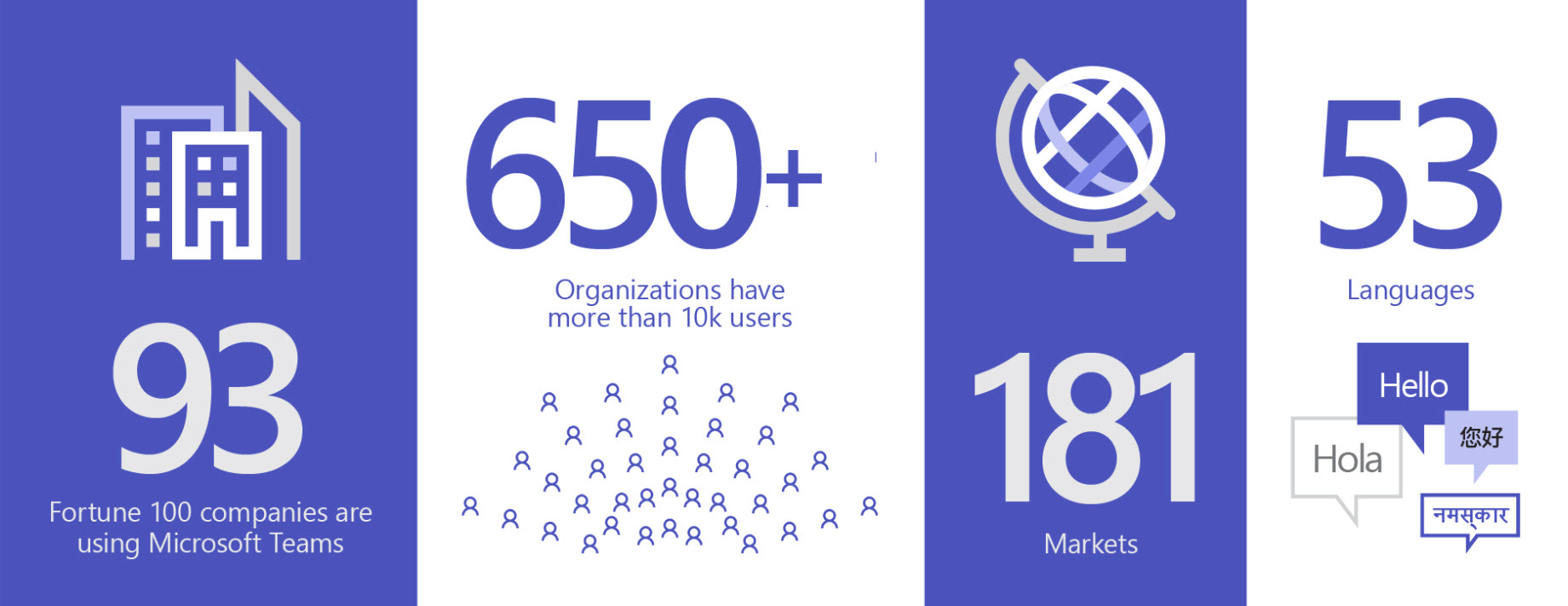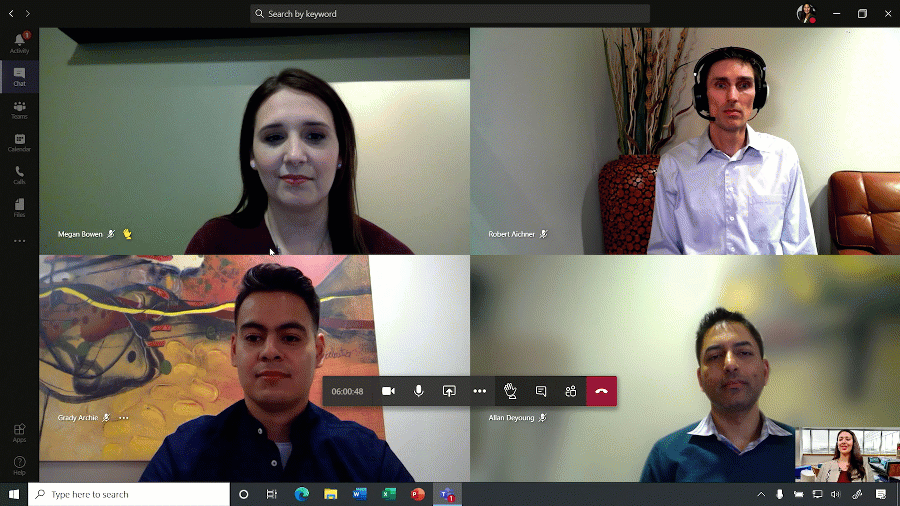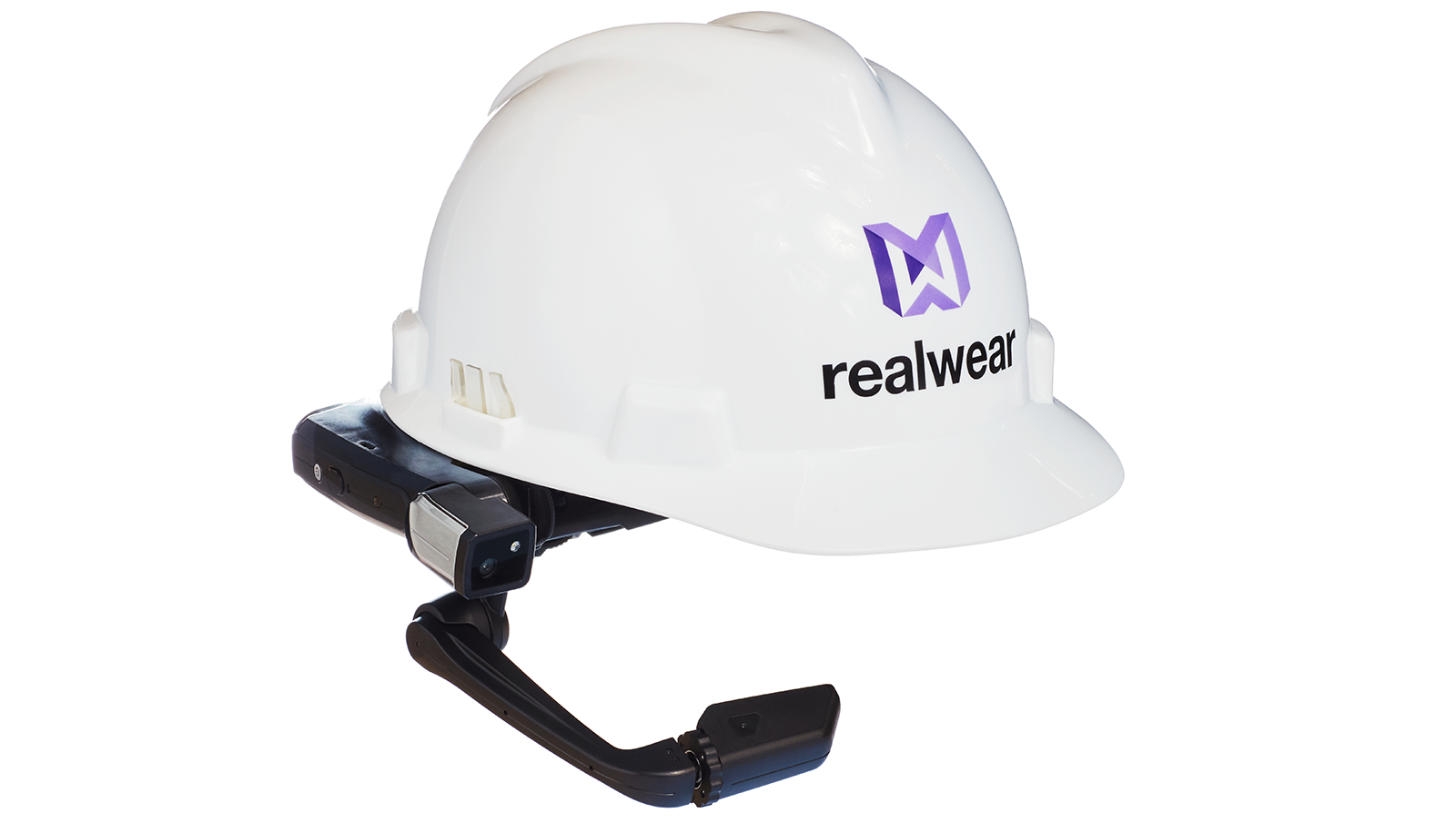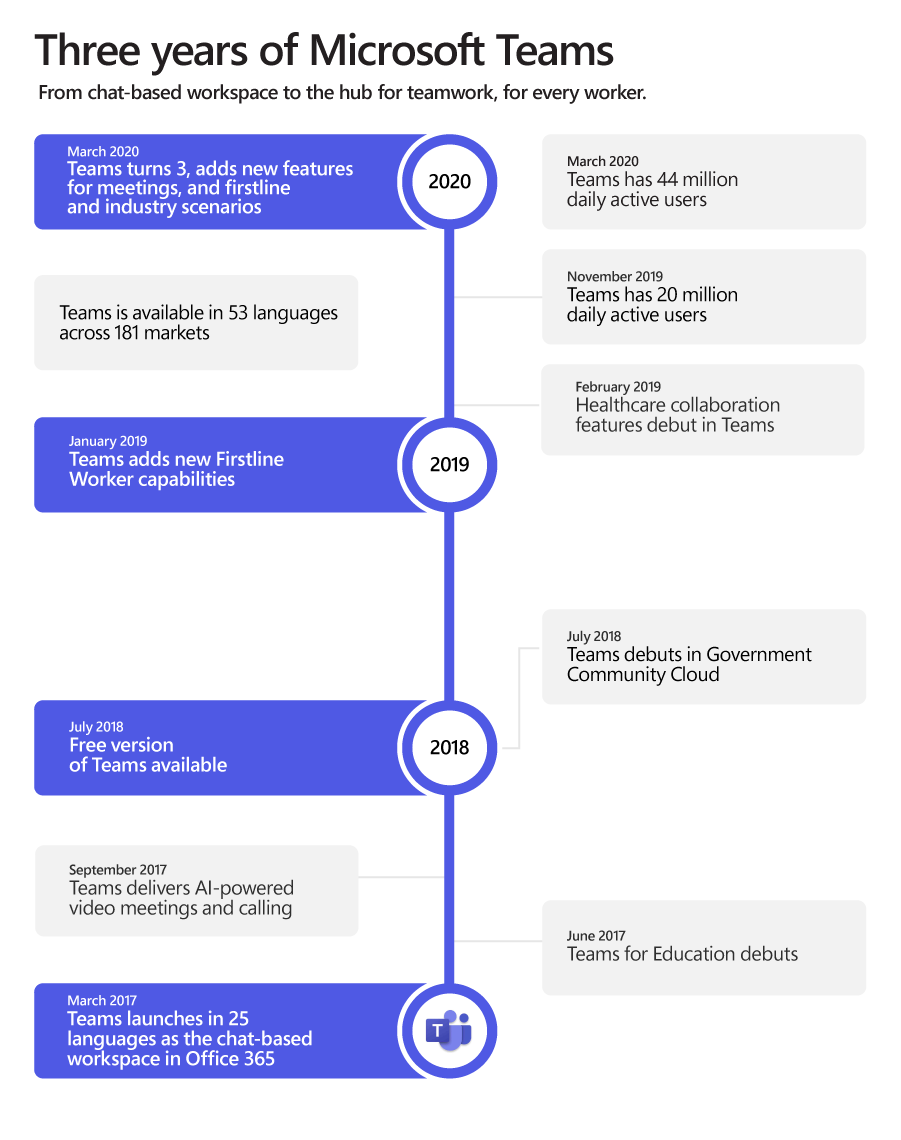
Microsoft Teams at 3: Everything you need to connect with your teammates and be more productive
This week marks the third anniversary of Microsoft Teams. It’s been an incredible three years, and I’m inspired to see the way organizations across the globe are using Teams to transform the way they work. Today, I’m going to share some new Teams capabilities across a few different aspects of the Teams experience, many with a tie to meetings.
But first I want to talk to you about the moment we all find ourselves in. And I want to recognize the organizations, employees, and students across the globe who have been thrown into remote work and remote learning in an effort to keep themselves and the people around them healthy and safe.
Adjusting to remote work and learning
Around the world, millions of people have been impacted by the COVID-19 outbreak. It has affected how we work, how we socialize, our family life, and our community life. Here in the Puget Sound, we’ve asked about 50,000 Microsoft employees not to commute to work, and they are joined by tens of thousands of Microsoft employees worldwide who are now working remotely. It hasn’t been easy. Sometimes it’s been downright disorienting. But our team is still connecting. Still collaborating. Still getting our work done.
In the face of COVID-19, there are countless stories from customers who are using Teams to connect and thrive in inspiring ways. A professor at University of Bologna in Italy shared on Twitter how the school moved 90 percent of courses online to Teams within four days, which is definitely a first in the university’s 900-plus year history. Doctors at St. Luke’s University Health Network in Pennsylvania will use Teams for videoconferencing with patients, especially those who are most vulnerable to coronavirus, as a way to protect both patients and healthcare providers. And the City of Osaka in Japan is using Teams to conduct orientations and trainings for hundreds of new incoming employees in April.
Stories like these are playing out in countries the world over. We believe that this sudden, globe-spanning move to remote work will be a turning point in how we work and learn. Already, we are seeing how solutions that enable remote work and learning across chat, video, and file collaboration have become central to the way we work. We have seen an unprecedented spike in Teams usage, and now have more than 44 million daily users,* a figure that has grown by 12 million in just the last seven days. And those users have generated over 900 million meeting and calling minutes on Teams each day this week.
It’s very clear that enabling remote work is more important than ever, and that it will continue to have lasting value beyond the COVID-19 outbreak. We are committed to building the tools that help organizations, teams, and individuals stay productive and connected even when they need to work apart.
Transforming the way people work
Over the last three years, thousands of organizations, small and large—including 93 of the Fortune 100—have discovered how Teams can be their hub for teamwork, helping them to stay connected and engaged. Industry leading organizations are rolling out Teams enterprise-wide. In fact, 20 customers have more than 100,000 employees actively using Teams, including Ernst & Young, SAP, Pfizer, and Continental AG, as well as Accenture, which has 440,000 employees actively using Teams.
What’s new in Teams
We continue to invest in experiences that will make it easier for teams to communicate and collaborate. The new capabilities we are announcing today reflect our commitment to two things: building the very best online meeting experience for our customers; and bringing technological solutions to traditionally underserved professionals, including Firstline and healthcare workers.
- We’ve all been in a remote meeting when a participant is loudly typing on their keyboard, or someone is sitting near a vacuum running in the background. Real-time noise suppression helps to minimize distracting background noise, allowing you to hear what’s being said.
- In large meetings, it can sometimes be difficult for remote participants to chime in when they have something to say. The raise hand feature lets anyone in the meeting send a visual signal that they have something to say.
- Industrial workers need to communicate and collaborate effectively while staying safe. Through a new integration between Teams and RealWear head-mounted devices, Firstline Workers will be able to access information and communicate hands-free with remote experts from their job site.
- Conducting B2C virtual appointments is a common requirement for situations like healthcare patient visits, client meetings, or job candidate interviews. Announced earlier this month, the Bookings app in Teams makes it easy to schedule, manage, and conduct virtual appointments.
- Teams will soon enable you to pop out chats into a separate window to help you streamline your workflow and move more easily between ongoing conversations.
- Offline and low-bandwidth support lets you read chat messages and write responses, even without an internet connection, making it easier for you to move things forward no matter where you are.
- We are also expanding the Teams devices ecosystem, with new devices certified for Teams. The Yealink VC210, now generally available, is the first collaboration bar certified for Teams, and brings together speakers, microphones, a camera, and a native Teams experience to deliver a meeting experience for smaller conference rooms that is simple to install and easy to manage. In addition, the Bose Noise Cancelling headphone 700 UC is available for purchase in late spring.
- We’re pleased to introduce Microsoft 365 Business Voice in the U.S., a new offering for small-and mid-sized businesses that make Teams a complete phone system, as well as a new Microsoft 365 Enterprise plan lineup that will include additional licensing options for Firstline Workers.
Unless otherwise stated above, the new capabilities will be available later this year.
Since we launched Teams three years ago, it has evolved to become the hub for teamwork—a place where you can meet, chat, call, and collaborate all in one place. We will continue to improve and expand experiences for all workers to be as productive and connected as possible. As the COVID-19 outbreak continues to push people everywhere into remote work and learning, enabling remote work and remote learning has never felt more important, and we are grateful for the opportunity to stand by our customers at such an extraordinary time.
*We define daily active usage as the maximum daily users performing an intentional action in a 24-hour period across the desktop client, mobile client, and web client. Intentional actions include sending or replying to a chat, joining a meeting, or opening a file in Teams. Passive actions like auto boot, minimizing a screen, or closing the app are not included.




